QuestionRecently i just seriously doubt the effects of UVB light.i went thruogh a iguana caresheets website.It said actually iguana dont need that kind of light to produce vitamin D3.The link is herehttp://my.pclink.com/~dkelley/igcare.htm
Then i went to a local petshop.The iguana kept in the petshop dont have any special lighting system,but they dont seems to develope any signs of metabolic bone disease,of course these are not newly arrived animal.I saw them here for months,then i ask the keeper there.They said iguana dont need to be exposed to UVB light.For now i struggle,i struggle which side should i trust.the side that claims to have worked with iguana for years with thee exposure to UVB light or the side that seems to have no problem to raise iguana without any sunlight or UVB light.
AnswerKew,
I am truly shocked that you were told by anyone with reptile experience that iguanas don't need UVB. I assure you, based on extensive research into this disease and with many years rehabilitating iguanas, that iguanas do, indeed, need UVB to produce vitamin D3, thus allowing them to digest calcium.
I am going to start by saying that any website ending in a ".com" is not a credible source. Only websites with a ".org" or ".edu" or ".gov" will I consider credible sources because any random person can buy a ".com" website and publish anything they desire to publish. At the end of this message I will provide you with very credible web links into iguana care and also with several statements from credible sources reinforcing the fact that iguanas do require UVB.
Now, let us discuss your experience with seeing iguanas in pet stores without UVB... Yes, it would visibly appear to you that an animal with mild to moderate Metabolic Bone Disease looks normal. In essence, Metabolic Bone Disease is a condition induced upon captive reptiles due to the absence of calcium. The absence of calcium can be from 1 of 2 things: poor diet and/or lack of UVB exposure. Metabolic Bone Disease DOES NOT OCCUR in the wild because in the wild, iguanas receive plenty of UVA/UVB exposure and eat indigenous plants native to Central and South America, not lettuce, carrots, broccoli, etc. that people try to feed them.
Now, think about it this way: Metabolic Bone Disease is the reptile form of osteoporosis. You cannot look at a person and say to yourself: "That person has severe osteoporosis." What happens to elderly people with osetoporosis? Their bones become weak, brittle and prone to fracture and that is why that when so many of them fall down, they become seriously injured and break hips, legs, etc. If an iguana is deprived of the ability to absorb calcium for any significant length of time, their bodies will begin to extract the calcium they need to survive from their bones and their bones will become weak, brittle and prone to fracture. Only in the most SEVERE and serious stages of Metaboilic Bone Disease will you begin to see visible deformities. It would become evident to you that an animal had Metabolic Bone Disease once you attempted to put in into a free-roam environment and the animal becomes injured very easily.
I will tell you a story about my first rescued iguana named Mr. Pop. When I rescued Mr. Pop, he looked like a normal, healthy iguana aside from the fact that his nails were a bit messed up and he had lost the lower half of his tail. I underestimated his condition and allowed him to roam free his first day with me. I left him in a closed room overnight to sleep and when I went in there the next morning there was blood all over my wall and his entire tail was broken off at the base and lying on the floor in a pool of blood...he had jumped from a high surface down to the ground, landed on his tail wrong, and because his bones were so weak, it snapped right off. Then, about 2 months later, under the advice of my vet, I made an outdoor terrarium for him to receive natural sunlight and speed up his recovery and within the first day of him being out there, he lost an entire finger off of his right hand just from climbing up and down the chicken wire siding of his cage because his bones were still so weak it took a finger right off.
Metabolic Bone Disease is a hidden condition most of the time. The way you can tell if an iguana has mild to moderate MBD is if they appear to be small for their size, sometimes they are more docile, and if they have big/enlarged joints in their fingers/toes and their nail beds will often be trashed. If you let it advance to its severe stages (if the iguana lives that long) you will see hunchback iguanas, iguanas with square jawlines, knobby protrusions on their bodies, limps and in the saddest of all cases, they will become paralyzed and only be able to drag themselves along, no longer able to climb. What is the most troubling about MBD is that the deformities and disfigurement can never be cured, once paralyzed, they will remain this way, but they can still recover from MBD and restore heathy calcium levels in their bones.
Now, I will provide you with some excerpts taken directly from credible online sources
"Since only UVB (and not UVA) light will trigger calcium utilization, a special lamp may be purchased through a pet store. Standard plant grow lights should not be used because they put out only UVA light. Since UVB bulbs will only continue to put out the UVB light for about 6 months, bulbs should be changed frequently. To ensure adequate exposure, UVB light must be shown directly on the reptile and not through glass or plastic." -Univ of Illinois Urbana-Champaign College of Veterinary Science (see http://vetmed.illinois.edu/petcolumns/index.cfm?function=showarticle&id=328)
"There remains much debate as to the necessity of and efficacy of natural and artificially produced ultraviolet B wavelengths in the development of precursors to vitamin D3 and the metabolism of calcium. Gehrmann (1991) reports anecdotally that not all lizards require UVB to maintain proper D3-calcium-phosphorus balance. Bernard, et al. (1991) found that the green iguana (Iguana iguana) fared much better when exposed to ultraviolet B wavelengths than they did to vitamin D3 injections or supplements added to their food. As both ultraviolet A, which acts upon appetite and behavior, and ultraviolet B wavelengths are more likely to benefit lizards and chelonians than not, long daily periods of access to such wavelengths should be considered a necessary part of the care of diurnal lizards and all chelonians (Alberts, 1994), and should figure as a prominent part in the daily care and maintenance of reptiles who commonly suffer from MBD in captivity, such as the green iguana." (see http://www.anapsid.org/mbd.html)
"MBD is generally caused by too little calcium, too much phosphorus, too little or too much vitamin D3, too little ultraviolet light (UV B), too little protein or a combination of these factors." - Melissa Kaplan, founder of anapsid.org (see http://www.anapsid.org/mbd2.html)
"MBD can be caused by a variety of factors or a combination of factors, most of which are related to improper husbandry. MBD is ultimately a calcium deficiency. It can be thought of as the iguana equivalent of rickets. MBD is caused by one of the following factors: not enough calcium in the diet, lack of exposure to UVB light, and inadequate temperatures." - The Green Iguana Society (see http://www.greenigsociety.org/mbd.htm)
Good websites for iguana care include:
http://www.anapsid.org
http://www.greenigsociety.org
http://vetmed.illinois.edu/petcolumns/index.cfm?function=showarticle&id=328
Please let me know if you have ANY further questions, this is a topic I feel VERY strongly about and want to make sure you understand the severity of MBD and the necessity for UVB.
Sara J Gwerder
President
Raptor Rescue Iguana Sanctuary
Shreveport, LA
www.RaptorRescue.org
P.S. I tried to email the creators of that website and express my discontent, but the email was returned to me saying
"sorry, we were unable to deliver your message to the following address.
<dkelley@pclink.com>:
Remote host said: 554 Sorry, no mailbox here by that name. (#5.1.1) [RCPT_TO]"

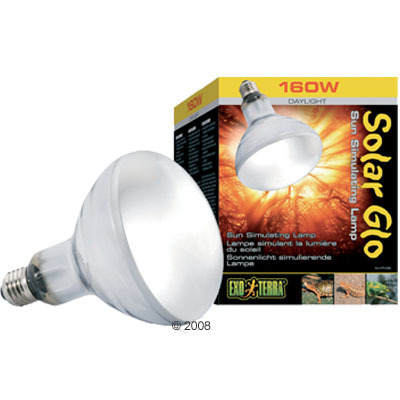 iguana uvb and supplements
QuestionHello Sara,
Before I begin to ask more questio
iguana uvb and supplements
QuestionHello Sara,
Before I begin to ask more questio
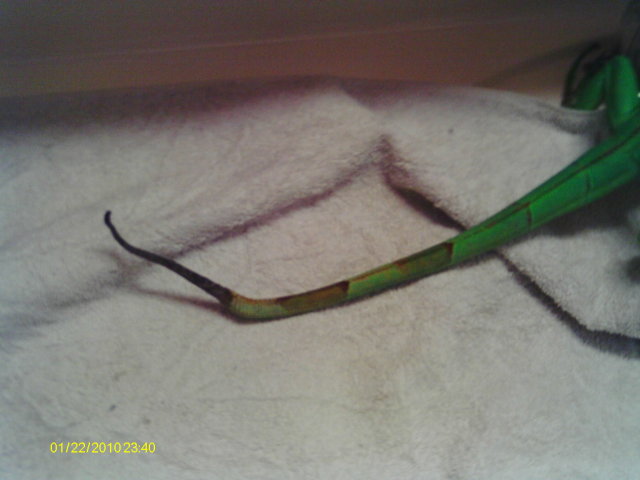 regrowing a tail
QuestionQUESTION: Hello, my dad got me an iguana about
regrowing a tail
QuestionQUESTION: Hello, my dad got me an iguana about
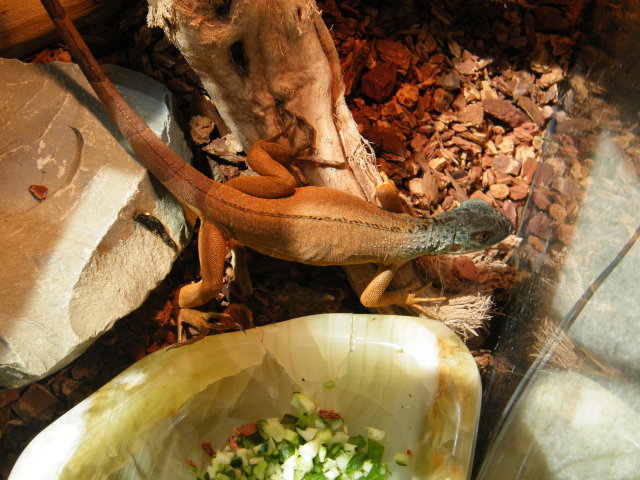 thanks
Question
marley
thanks for all the info. a giveaw
thanks
Question
marley
thanks for all the info. a giveaw
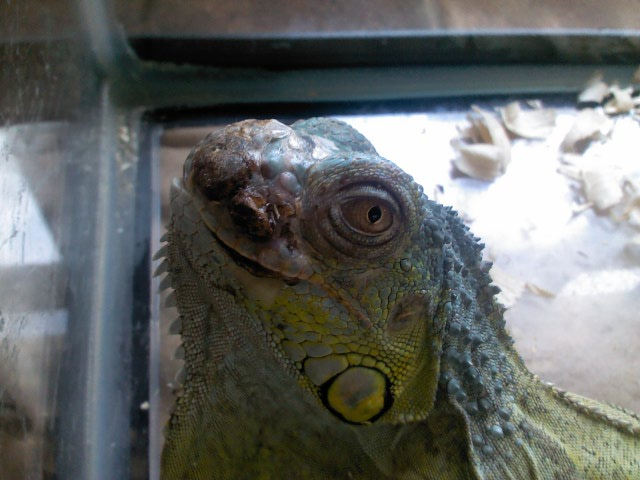 Starved Iguana with mouth & nostril sore
Question
Percy1 Percy2
First off the histo
Starved Iguana with mouth & nostril sore
Question
Percy1 Percy2
First off the histo
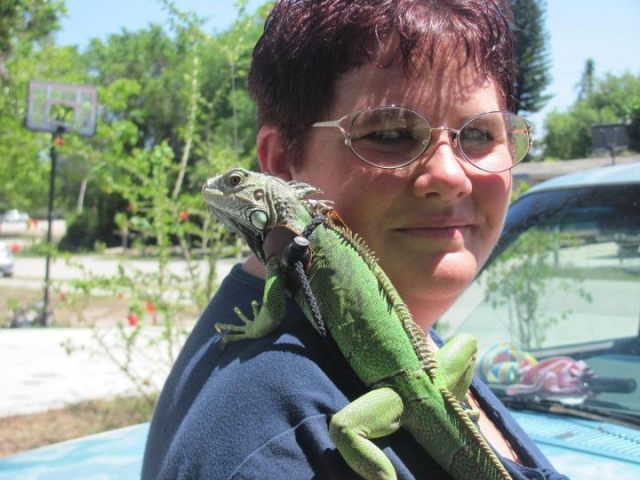 Licking
Question
Me and Sylvester
My green iguana was ab
Licking
Question
Me and Sylvester
My green iguana was ab